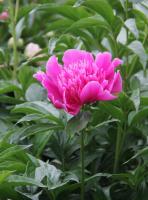Introduction
Plants are complex organisms that have evolved over millions of years to adapt to different environments. Vascular plant tissue is a key component of these organisms that transports essential nutrients and water from the roots to the rest of the plant. In this article, we will explore the function and structure of vascular plant tissue in more detail.
What is Vascular Plant Tissue?
Vascular plant tissue is a type of plant tissue that is composed of specialized cells arranged in tube-like structures. This tissue is responsible for transporting water, minerals, and other essential nutrients throughout the plant. There are two types of vascular plant tissue: xylem and phloem.
Xylem
Xylem is the type of vascular plant tissue that transports water and minerals from the roots to the rest of the plant. The cells in xylem tissue are long and tube-like, which allows for efficient transport of these nutrients. The main types of cells in xylem tissue are tracheids and vessel elements. These cells are lignified, meaning they are reinforced with a substance called lignin, which provides strength and support to the plant.
Phloem
Phloem is the type of vascular plant tissue that transports sugars and other essential organic compounds from the leaves to other parts of the plant. Unlike xylem tissue, the cells in phloem tissue are thin and elongated. The main cells in phloem tissue are sieve tube elements and companion cells. These cells work together to transport nutrients through the plant.
Function of Vascular Plant Tissue
The function of vascular plant tissue is to transport essential nutrients throughout the plant. Xylem tissue transports water and minerals from the roots to the rest of the plant, while phloem tissue transports sugars and other organic compounds from the leaves to other parts of the plant. This enables the plant to carry out key processes such as photosynthesis, growth, and reproduction.
Structure of Vascular Plant Tissue
The structure of vascular plant tissue varies depending on the type of tissue. Xylem tissue is composed of tracheids and vessel elements, which are reinforced with lignin. Phloem tissue is composed of sieve tube elements and companion cells. These cells are connected by plasmodesmata, which are small channels that allow nutrients to pass through.
Conclusion
Vascular plant tissue is a crucial component of plants that enables them to transport essential nutrients throughout the organism. Without this tissue, plants would be unable to carry out key processes such as photosynthesis and growth. By understanding the function and structure of vascular plant tissue, we can gain a better understanding of these complex organisms and their adaptations to different environments.

 how many times do yo...
how many times do yo... how many planted tre...
how many planted tre... how many pine trees ...
how many pine trees ... how many pecan trees...
how many pecan trees... how many plants comp...
how many plants comp... how many plants can ...
how many plants can ... how many plants and ...
how many plants and ... how many pepper plan...
how many pepper plan...






























